



A (wonderful) graduate story by Liam Isaac - Head of Digital Learning at UWC South East Asia.
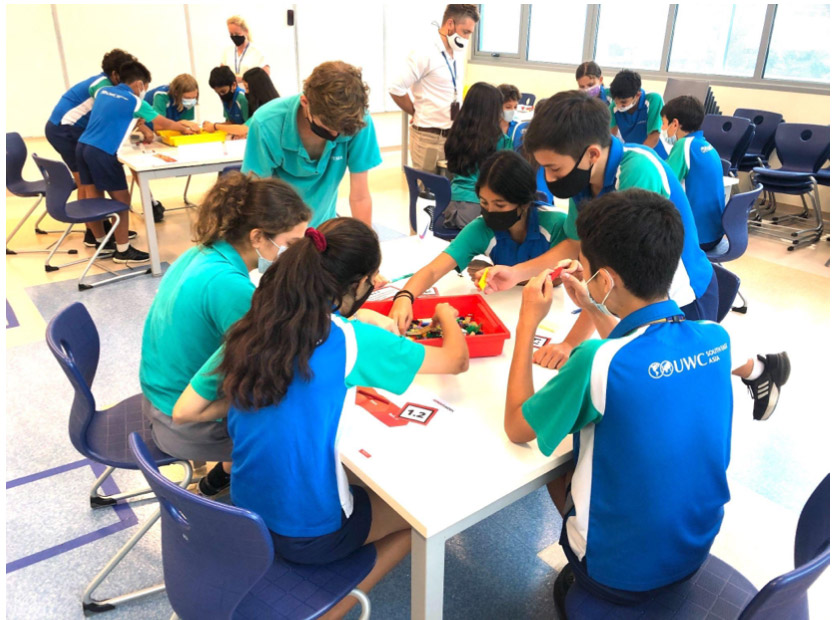
From the moment I heard about LEGO Serious Play, I knew that it was something that I wanted to learn more about and - thanks to a fantastic online course run by Sean Blair - last February, whilst on a ‘cruise to nowhere’, I was lucky enough to complete the LEGO Serious Play Online Build Level 1 and 2 workshop.
Whilst I instantly knew that this method had the potential to be transformative within our secondary school context, I perhaps underestimated just how significant an impact it could have, along with the range of contexts within which it could prove effective.
In one school term alone, we have used LEGO Serious Play to facilitate shared vision building workshops with educator teams, explore our Middle School students’ relationship with Social Media and challenge learners in class to use this process to enhance their learning of key concepts within different subject areas.
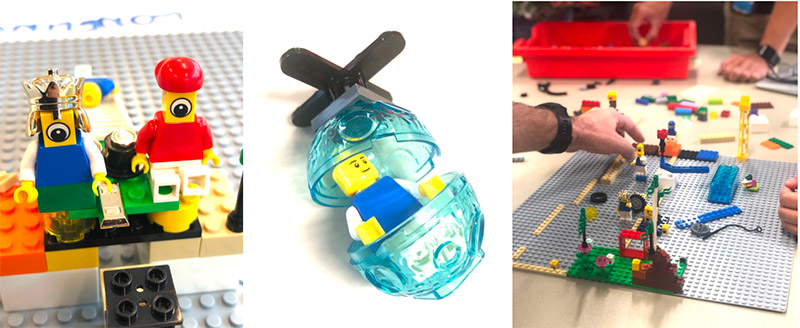
In the coming months, we have plans for how the process can inform our approaches; notably the engagement of our wider-school parent and alumni community as well as formally embedding the process into schemes of work, effectively making LEGO Serious Play a mainstream strategy within the ‘teacher’s toolkit’.
Here are our big takeaways regarding how and why the process has proved successful within our specific school context.
______________________________________________________
What Went Well: Reasons Why LEGO Serious Play Has Proved Successful
It is a democratic process
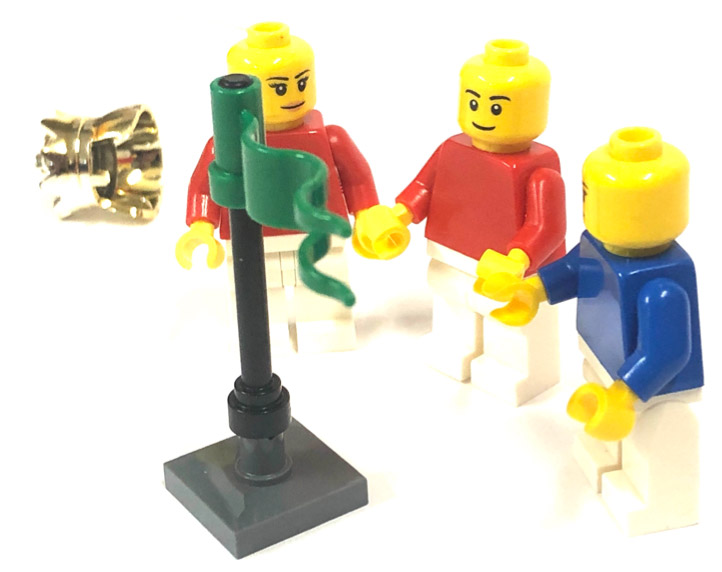
In the context of education, this one is HUGE. As Sean stated during training, in LEGO Serious Play, ‘everybody builds, everybody shares’. This equitable engagement can be very difficult to achieve in a ‘typical’ classroom or meeting environment for a whole host of reasons; established hierarchies, different languages, cultural norms and learning needs, as well as the behavioural chasm between introvert and extrovert personalities to mention just a few.
Regardless of whether participants have been students or staff, the feedback from our sessions have always highlighted the democratic nature of this process as a significant positive. This was perhaps best epitomised by a member of our Outdoor Education team’s administration staff who valued the process as “providing opportunities for all individuals to actively participate”. This was particularly validating as the department’s backroom staff had not always been engaged in the co-creation of department visioning.
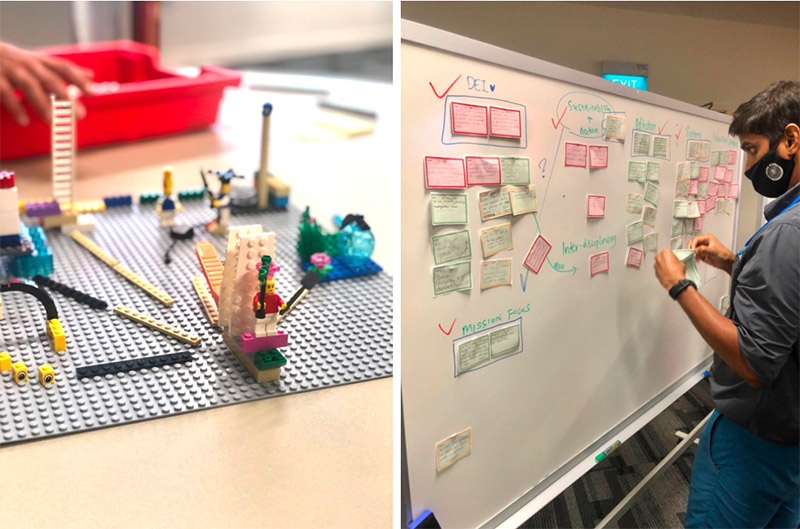
It is a safe space for idea sharing
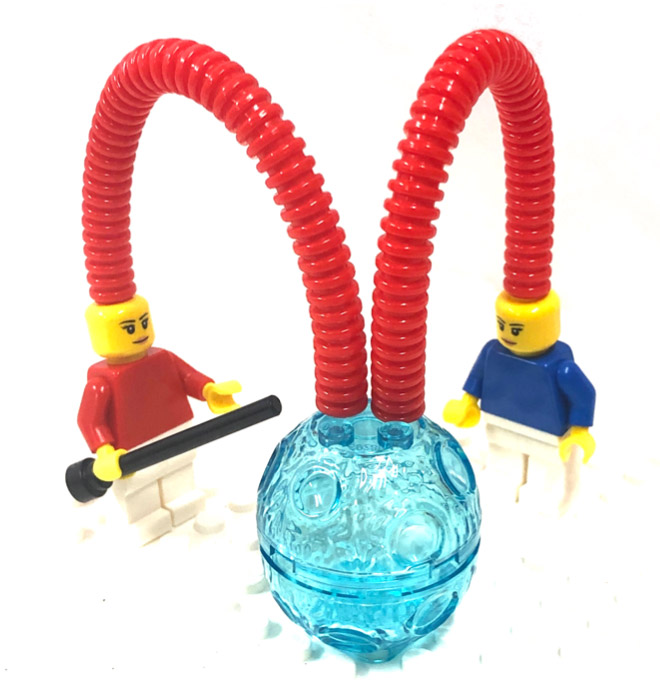
The beauty of communicating through models - in our experience - is that it distances participants from the ideas they are sharing. We have observed that, by allowing the model - rather than the individual - to take centre stage in this manner, participants are less guarded about sharing potentially controversial ideas. This has been particularly powerful for workshops where students have been exploring socially sensitive issues; something that can be incredibly challenging for status-aware teenagers to do; especially when this process is facilitated by very “uncool” authority figures such as their teachers.
For example, in a workshop where Middle School students explored their relationship with Social Media - very much a ‘powder-keg’ issue - participants were able to use their models to frame their own ideas as the views of both themselves and their peers, without worrying that their ideas would directly reflect upon themselves as individuals, offering us, as school leaders, a more authentic less-filtered reflection of how our student-body really felt about social media.
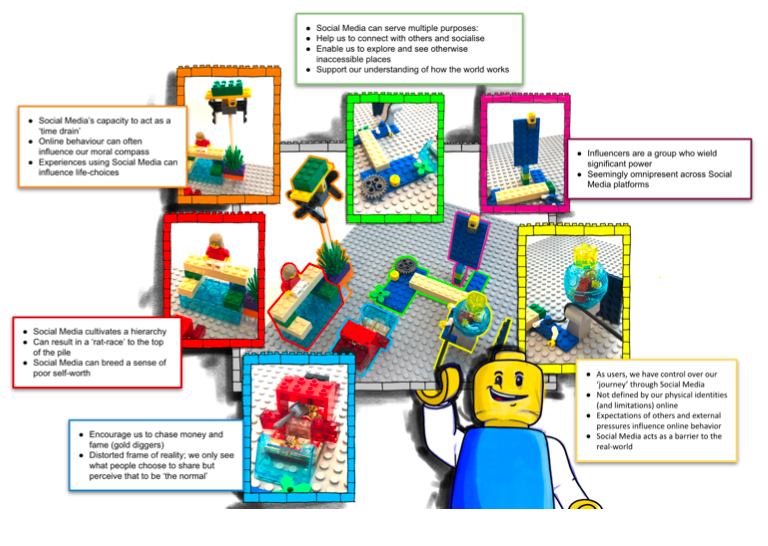
This ‘veil of anonymity’ that LEGO Serious Play offers participants throughout the process is a significant positive case for its’ use within schools.
It promotes tolerance
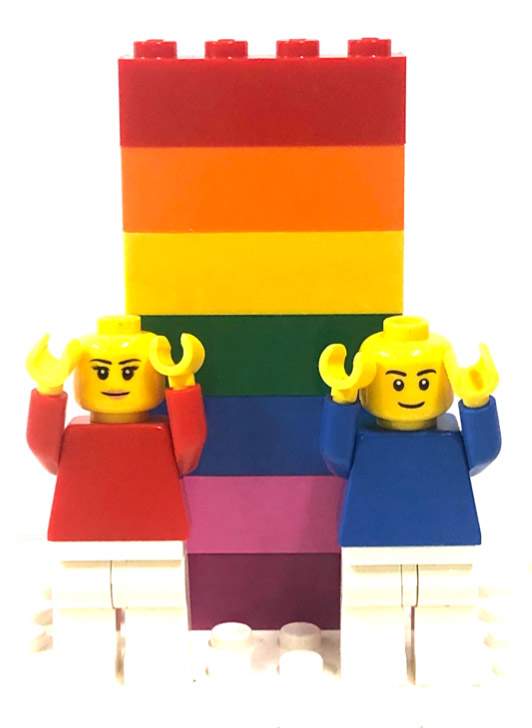
As a large international school, UWCSEA is the proverbial melting pot. With such a diverse student, staff and community population, our school mission makes explicit our aim to ‘use education as a force to unite people, nations and cultures for peace’. A fundamental foundation for peace is tolerance; tolerance for the opinions, beliefs and values of those who do not necessarily share the same opinions, beliefs and values as you.
Having observed how students and staff within our school community behave during the workshops and sessions that we have facilitated, I have become a huge advocate for the extent to which tolerance is inherently built into the LEGO Serious Play process.
The focus on active listening and the need to recap and summarise the ideas of others ensures that participants must truly listen, hear and understand the stories that their peers choose to share. In our educational context, this is not always the case, with students often eager to share their own ideas whilst not fully appreciating those of their peers. This process challenges this default to myopia. As one student put it in her workshop feedback:
“I felt that it made us listen more carefully and through paraphrasing, allowed us to understand each other's thoughts and concepts better”
In our experience, the shared model build is where the processes capacity for fostering tolerance truly comes to the fore. In one student workshop, when it came to constructing their shared response to the build question, not a single student chose one of their own ‘disaggregated parts’ to contribute to the shared build; instead preferring to select elements of their peers’ individual builds.
The significance of this is that, through the process, our students evidenced that they not only heard and appreciated the diversity of ideas that emerged, they validated these different ideas by choosing to contribute these to the group response over their own.
If this is not an outstanding analogy and blueprint for peace, then I do not know what is!
______________________________________________________
Challenges we encountered
These are just some of the reasons why we continue to advocate for the use of LEGO Serious Play within our specific school context, and why we will continue to explore where it can enhance our learning program.
It is also worth acknowledging that, through our exploration, we have experienced challenges when it comes to using this process. In the interests of transparency, here are the major ones that we have faced:
Time: In schools, timetables are constraining at the best of times and, therefore, finding the often extended periods of time required to facilitate powerful and meaningful workshops with students and staff alike has been sometimes difficult
Quality Control: Running workshops with larger student numbers has proved challenging; particularly where facilitator to participant ratios are such that multiple build groups are in play. In particular, it has sometimes proved difficult to impress upon students the significance of recapping where the facilitator has not been ‘at the table’ to explicitly do so.
Focus: Working with children is an amazing experience. They tend to bring considerably less ‘baggage’ to the table than we adults do. The pay off for this enthusiasm is that it can be challenging to maintain focus. As with any learning experience, keeping learners on task, whilst maintaining the levels of creative freedom necessary for the LEGO Serious Play process to be effective has been a balancing act.
Moving forward, we are excited to see the potential positive influence that this process can have upon our school community. Significantly, we would be very excited to share our experiences with other educators to build a professional community and learn from each other's successes and challenges.
Contact Liam via LinkedIn
Note from SeriousWork founder Sean Blair: Liam, thanks so much for sharing your brilliant story, to see such a wide range of uses in such a short time since training is truly impressive. Thank you for attending out online class from Singapore, and working so late into the night to learn these skills you have evidently mastered so well.
We love designing and testing ideas before we launch new techniques or trainings. The idea of prototyping is second nature to design trained SeriousWork founder Sean Blair.
In March 2021 we ran our second pilot of our online build level 3 – systems models class. Below you can read a detailed write up from LSPConnect co-founder Guy Stephens.
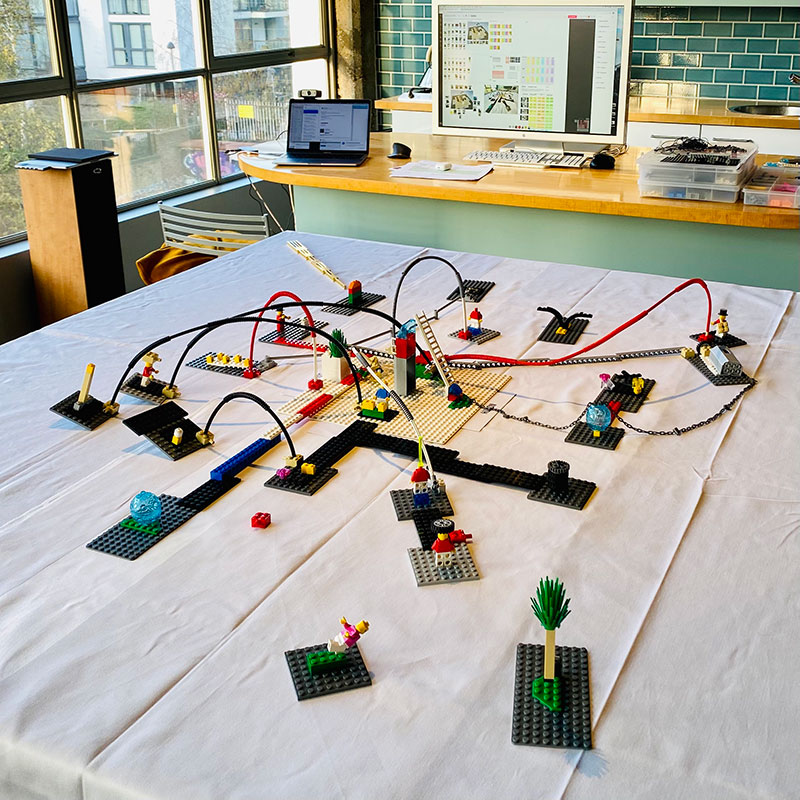
Some thoughts on Systems Build with SeriousWork, by Guy Stephens
In my opinion, over the last year there has only really been one player in the online space who has set out to share their journey of exploration into the world of online LEGO Serious Play with others.
And when I think about online LSP, I’m not thinking about it in terms of – let’s just do the same thing online as we would face-to-face. What I’m talking about is someone who has really considered what that online experience could be. Explored what the possibilities might be. Someone who has treated online in its own right, taking into account the characteristics, dynamics, idiosyncrasies and richness of the online experience from the different perspectives of the process, the facilitator and importantly the participant.
Whether LEGO Serious Play can be done online or not is a somewhat pointless question in my mind, a distraction. To those who decry the authenticity of online LSP, my response to you is very simple: Ok, Boomer, move on!
If a facilitator thinks it can be done online, then the challenge is to find a way for it to be done, whilst trying to remain as true as possible to the principles and philosophy of LSP. Only then, through trial and error can the question of online be answered. And through that trial and error, can the online experience become more and more effective.
And so over the last year, Sean Blair, Jens Droege and Helen Batt at SeriousWork have gone on that journey on our behalf. They have put in the long hours of research and pilots, and arrived at approaches that enable online LSP to come to life – individual models, shared models, ‘magic hands’ and now System Build.
I was fortunate enough to be invited to take part in one of SeriousWork’s early System Build pilots. A few days before the pilot, I received instructions about how many Exploration Bags I needed, the extra bricks I could bring in to play, and the different connections that would be needed. I also received a link to MURAL where a Systems Build canvas had already been created. I was also asked to prepare in advance a specific type of connection, and a short description of that connection; I’ll come back to this later.
Everyone has the same set of bricks
Let me be very clear: At no time did I feel as if my options during model building were limited. At no time did I find that the limited choice of bricks were a constraint on the stories that emerged. The stories did not lack for anything apart from bighlighting my inability to adequately tell the story of the model I built.
Whilst having the choice to use a Duplo elephant, ladder, skeleton or shark might enhance model-building, I am also a strong believer, that because any brick can represent any object, entity or concept, nothing is really lost in having a smaller selection of pieces. And if a participant has never done LSP before, then they are in effect, none the wiser.
As a further test of my imagination and creativity, unbeknownst to the facilitator and other participants, I challenged myself to only use one Window Exploration bag to build all the models required for the Systems Build. I would only allow myself to move onto the second Windows Exploration bag once I had finished using all the bricks from the first. As it was, I only ever used one bag.
Now, I am not saying that you shouldn’t or can’t have more bricks and connections, but what is important is that facilitators do not place any perceived limitations of creativity or process on these inanimate bricks. The onus lies with the facilitator not only to draw out that streak of creative output from each participant, but also with regards to the efficacy of the workshop experience in which LSP is the chosen approach.
One thing I am going to explore in future online workshops, is what difference it makes if participants have different bricks. For me, I’m not so sure it matters. At the end of the day, the bricks are a catalyst for the stories that they represent. As long as there are no impediments to a participant creating that story, then choice of bricks is a moot point.
I do take into account that if one adopts the ‘magic hands’ approach, having the same bricks makes complete sense. One could also equally propose that once a picture of the model, agent or shared model is done and now exists in the online space, then that is all that is required, as it is he story that now takes precedence.
Connections need to be nurtured
It became apparent to me by the time I reached the end of the Systems Build pilot that connections are somewhat overlooked, and spending a bit of time on them is well worth it.
Before the pilot began I received instructions on which connections I needed, as well as a short description of the nature of each of the connections we could use. I was also asked to build a specific connection type, and prepare a short description of it, which I would share with the other participants at the appropriate time in the pilot.
When I came to build my connection, I spent a bit of time considering the different characteristics of each of the connections I could use. I didn’t want to just join them in a cursory way, but really think about what was unique about each, how they differed, and how meaning could be attached to them in different ways to illustrate different types of connections.
When we got to the relevant part of the pilot, each of the participants shared their particular connection. It was a kind of connections ‘skill build’. What this did was to actually raise the level of understanding of what a connection was, some of the different ways in which the connections could be joined together, how they could be used, and also how we could actually talk about them. Suddenly a very rich narrative emerged.
What it meant was that by the time we actually started to connect the agents to the shared model, it was obvious that everyone was very considered and thoughtful in the type of connection they choose, where they wanted it connected, and the words they used to describe the relationship between the connected elements.
Interestingly, spending time on the connections, did nothing to stop that sense of surprise (and excitement) when it came time to actually understand the impact the connected agent had on the shared model, and the other agents around it. Pushing it, pulling it, still resulted in unexpected consequences.
The goal is the Systems Build
If you are doing a Systems Build, don’t lose sight of this. Try to get to the Systems Build part as quickly as possible. Not everyone will agree with me on this. But my thinking is this: once you get to the Systems Build and start to play it out with the different connections, you can, if needed, always update existing or old knowledge with the knowledge that has just been uncovered. Dwelling on the individual or shared model builds serves little purpose, as these are simply the catalyst to uncovering this new knowledge. I’m certainly not saying – Systems Model and be damned – just be sure not to over-index your time on getting there.
Agent ‘playtime’ in a virtual space
This was a revelation for me! Once the agents have been built they are then brought into a virtual space. Each agent is photographed and then the image uploaded to a platform such as MURAL.
The virtual space allows the participants to familiarise themselves with the agents and affords the opportunity for further discussion and sharing of insights to take place. What it also does is enable the participants to ‘play’ around with the placement of agents in relation to each other, as well as the shared model. It becomes obvious very quickly where physical gaps or conversely clustering of agents takes place, highlighting the possible importance of certain agents or parts of a shared model that may not be as relevant as had initially been thought. Once this ‘play’ has taken place, the facilitator can then move the agent to its final place in the physical model that is being built.
This was an unexpected moment for me, and one that I would definitely like to explore further in future online System Builds.
For those who have not used online collaboration tools like MURAL or Miro, I encourage you to try them out. One word of caution, however, is that these are great tools and lend themselves well to online LSP. However, a facilitator must be careful to ensure that they do not become a convenient replacement for thinking through carefully the flow and purpose of your workshop with due care.
Two baseplates are better than one
I remember when I first saw the set-up used by the facilitator that there were two baseplates in use. A slightly smaller one on top of a larger one. The larger one was dark grey, with the smaller one on top, a lighter grey. I couldn’t work out why the baseplates were set-up in this way.
All became apparent once the agents were connected to the shared model, and the impact of the agents was then explored. The shared model was built on the slightly smaller, light grey baseplate. What this meant was that when the agent was pulled or pushed, it moved smoothly, so that the full impact of any movement could be seen.
Small things matter
So in the final summary, can a Systems Build be done online effectively?
For me, the answer is yes. Without a doubt.
What is exciting is not whether it can be done effectively but rather, that we are at the outset of this journey of exploration. There is still so much to be explored in the online space, not as some kind of time-limited alternative, but as an option in its own right. It is facilitators like Sean Blair and Jens Droege, amongst others, who are proactively exploring on our behalf, sharing generously their findings so that we may all learn, and together, create different narratives and new assumptions, and in so doing add to the existing rich narrative of LEGO Serious Play.
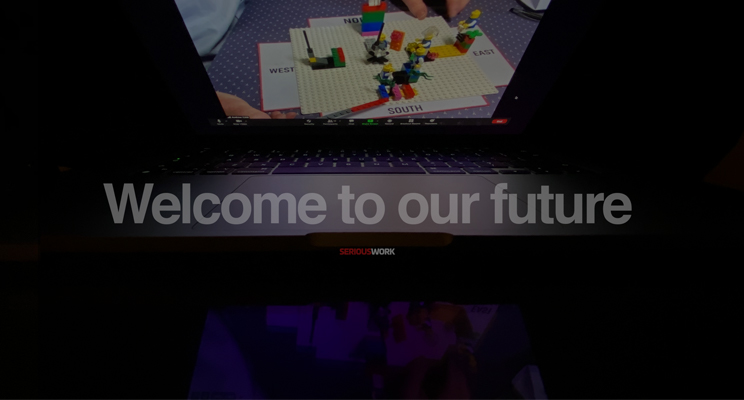
As we say goodbye (and I’m sure for some of us ‘good riddance’!) to 2020, I thought I’d take a moment to share a few of our plans for the year ahead.
Education is a big focus for 2021
In the year ahead we will continue to bring LEGO® SERIOUS PLAY® to further and higher education, we plan to share more examples and frameworks showing how it is being used, especially during COVID-19, to improve the learners experience and learning outcomes, across a wide range of faculties including business, medical and engineering schools. #EducationInnovation. Expect us to announce out first sector specialist training associate in this area and the development of an education focused community of practice / knowledge exchange.
Systems and strategy
In the year ahead we will illuminate the problem of ‘silo-strategy’ (strategy created by a single entity in pursuit of singular aims) and illustrate the opportunities and benefits of systems thinking driven strategy. We think this work will offer leaders working at the higher strategic ‘Build-level 3: System Models’ a fundamental reframe on what LEGO® SERIOUS PLAY® is and does. We hope to show that this approach is timely and valid for the system level challenges organisations and society faces. From the research and development work undertaken so far, we think this will be our most important work to date.
New materials
We will be publishing a range of material showing LEGO® SERIOUS PLAY® in combination with other methods and techniques, for instance how LEGO® SERIOUS PLAY® works with growth mindset frameworks, positive psychology or to enhance learning with the scrum framework.
More translation of our books
Our three books will become available in more languages. ONLINE will be available in German, Spanish and Italian, MASTERING will be available in German, and our first book SERIOUSWORK will be published in Chinese/Mandarin Q2 2021 and with luck other languages to be announced!
We will bring LEGO® SERIOUS PLAY® to the attention of new audiences to show how the method is used to support organisational development, leadership development and organisational development. Maybe more HR professionals will consider LEGO® SERIOUS PLAY® a valuable tool amongst many other excellent HR tools and methods?
Advanced training
We are working on further advanced training options and advanced application development that we will teach in new advanced training classes, and we are developing a launchpad programme to help already trained facilitators, who have lost their mojo a route to rebuild confidence, sharpen skills and get into orbit!
In pursuit of gold standard
And of course we will continue to strive to offer the best LEGO® SERIOUS PLAY® training in the world. We will always deliver practice-based-learning to develop learners facilitation skills and confidence in applying the method in the environment our clients ask us to work in, online and face-to-face.
Thank you
Finally HUGE gratitude to all who have shared the journey with us this year, too numerous to mention, but you know who you are and I hope you can feel the warmth of my appreciation for the trust, creativity and fun you have bought to my year.
Happy New Year - Sean
Here's the back story to our new book.
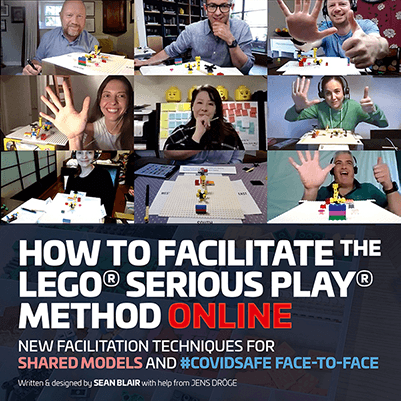
March 2020 was set to be a busy month for me, my schedule included system model workshop, a trip to France and two trips to the USA.
On Wednesday March 11th, I caught the early morning Eurostar train from London to Paris. The COVID-19 crisis was escalating but the attitude to the virus in the UK in early March was still relaxed. I got back from Paris late afternoon. The next day the US Government announced a travel ban from the EU to the USA, except UK and Ireland...
Let's wind the clock back a few months. In December 2019, I had been invited to pitch to train a very senior group of men and women in a leadership academy in a branch of the US Military. Accordingly I had spent a good chunk of the previous three months in the most complex contracting I had ever been involved with (how does a document running to 55 pages and 37000 words sound?).
Having finally agreed a contract, on March 2nd, that day I booked to fly to Washington DC for a 4 day training week commencing March 16th. At the time of booking, the decision to travel to the USA felt safe.
Fast forwards, and pick up the story. So the day after I got back from Paris, the US Government had issued a travel ban from the EU, but excluding the UK and Ireland. The ban came into force at midnight on March 14th, six hours after I was supposed to land.
I began regretting my trip to France. Legally, I knew I was OK to fly, (virus free?), but was worried my client might cancel the training, because I'd been in Paris. We had a phone call, discussed the situation and decided it was OK. I'd travel the very next day.
Landing in Washington DC on the afternoon of Friday March 13th, I cleared customs, hired a car and drove several hours to the client base. The next day, just after Saturday lunchtime, the US Government extended the travel ban to include the UK, effective Sunday 15th March. Great.
After a call with my family I packed my bags, turned around to travel home, to try and fly six days later could be tricky. So I drove to the airport and caught a flight back to London 24 hours after landing (and as it turned out, my flight home was cancelled).
In the UK, the week that followed saw schools shut. Then on March 2Oth a UK wide lock-down began. My world (along with the millions of others who were ahead of 'the curve'), went crazy.
Sitting here in London, in October 2020 the world has changed. Face-to-face meetings are mostly out, right now the COVID-19 curves are going up again and the economy is not wearing a happy face.
In late March, it took me about a week to understand that things would not return to the 'normal' we had known only days before.
I could either sit at home and wait for normal to return, or I could accept the reality of the situation and embrace change. An insight given to me twenty years ago, helped me resolve what to do next.
'Masters of change, use change to create change'
As a much younger man, I had been fortunate to be taken 'under the wing' of an elder, Michael Frye a lovely and wonderful man. One day, over lunch, he asked me for my definition of 'mastery of change'. Michael was like that, he would ask questions that I'd never even thought about. He then said, 'Masters of change, use change to create change.'
I had never been sure what to do with this insight until March 2020, having been like many in the LEGO® Serious Play® community, sure that online LEGO Serious Play was not possible. I resolved to set my biases to one side and learn from my own experience what was, or was not possible.
With the encouragement of my friend and training associate Jens, and with help from our wonderful graduate community, MeetUp groups and enthusiasts from LinkedIn, we began a series of experiments to learn about the possibilities and limits for online LEGO Serious Play mediated and via online platforms, mostly Zoom and Mural.
The results of these trials surprised me. It turns out there are things that are better when bringing digital tools to LEGO Serious Play facilitation. In the six months since March we have created new techniques to make the LEGO Serious Play Method work extremely well online.
Is it possible? The answer is a resounding yes.
We remain aligned with the core principles of the method and continue to use the ideas that we have written about in our previous two books, SERIOUSWORK and MASTERING.
There are additional techniques and requirements that ONLINE demands. The preparation phase is more complex, for both participants and facilitators. and online requires new skills. Foundation LEGO Serious Play components, like the three stage skills build requires a fourth skills build to be included.
The role the facilitator takes, especially during online shared model building is both different and at its core similar to what happens in the real world.
Our innovation to split the shared model building into new stages, disaggregate, rebuild, 'Magic-hands©" and 'Build-along©' still results in a shared model that people are proud of and feel ownership over.
There have been (and may still be), voices in our community saying online LEGO Serious Play is not possible. They are wrong. It is. And the approaches to online LEGO Serious Play will help cut carbon emissions long after the dark days of COVID-19.
This Online book has taken six months to write and we've shared drafts with our customers and students whose imagination and unlimited outlook inspires us everytime we pick up bricks. This book is a true act of co-creation, I just asked the question 'what's possible?', and made time to write up our learning.
Sean Blair, London UK, October 2020
The blog post below was written by SeriousWork graduate Dr Rebekah Wilson who works at Exeter University. Rebekah first published this post on the Exeter University Incubator website and we are grateful for her permission to re-post it here.

The Education Incubator Serious Fun, Serious Play, Serious Skills project awarded six bursaries to support Lego Serious Play Facilitation Training across the University of Exeter. In this blog, one of the bursary recipients, Dr Rebekah Welton shares her journey.

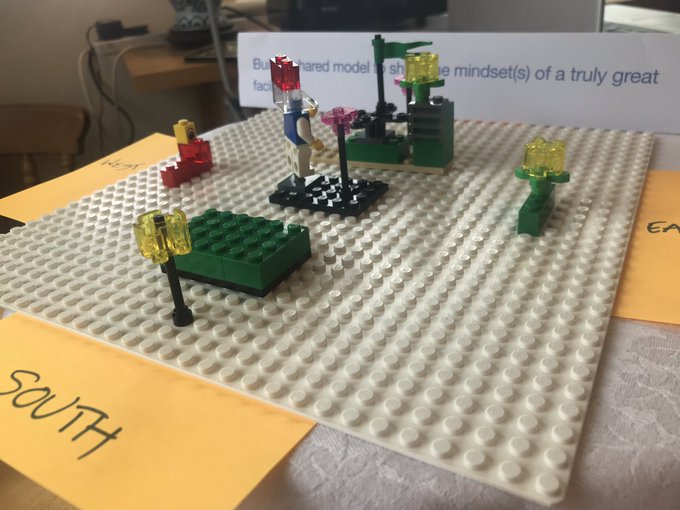
NOTE: Thanks for letting us share your write up Rebekah. We should also note that without the pioneering work being done by Dr Holly Henderson at Exeter University expanding the use of LEGO Serious Play at Exeter University would not be happening!